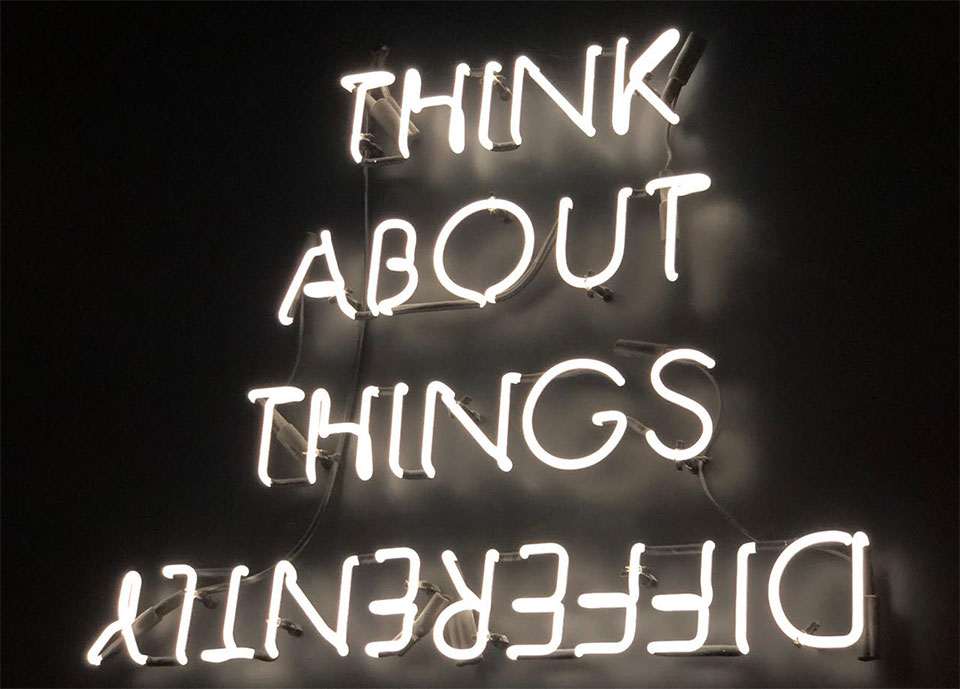Agree to Disagree: The Powerful Leadership Asset of Differing Views

Our images of the perfect leader, team, or organization are flawed, most notably when it comes to disagreement. Almost universally, we regard disagreement as bad, something to be avoided, severely limited, or at the extremes, punished. An affinity for order drives this view. Predictable processes, roles, and interactions, we are told, are necessary to deliver predictable results.
The problem is that this is only partially true. We need order, but just as much, and increasingly more, we need those forgotten elements that precede order: questioning assumptions, exploring new ideas, and debating how to adapt when the landscape around us changes. This is all the truer in a world more volatile, uncertain, complex, and ambiguous than ever before.
It’s time we proactively work to change our understanding of disagreement. Evidence helps, and it is mounting. In one notable example, a 2016 analysis of a decades-worth of existing research around diversity conducted by Harvard Business Review concluded that “non-homogenous teams are simply smarter.”
They are, HBR added, also “more likely to constantly reexamine facts and remain objective,” critical skills often in short supply in uncertain times. But there was still more to their findings. Diverse teams drawing from different backgrounds, opinions, and styles, HBR found, were also likely to become more aware of “their own entrenched thinking that could otherwise blind them to key information and even lead them to make errors in decision-making processes.”
It’s not simply how teams interact that advocates strongly for the value in disagreement, it effects the path the walk and the success they find as well. In their new book, Making Strategy Great: Arguing for Organizational Advantage, Stanford Professors Jesper Sørensen and Glenn Carroll make a strong case that good strategy depends on disagreement—not benefits from, but actually depends on it. To Carroll and Sørensen, good strategy is strategy that actually results in value creation and the ability to capture and perpetuate that value repeatedly. It’s a definition that’s easy to accept.
But what is it that makes strategy real in this way? The authors say it’s the recognition that strategy can also be defined as “a logical argument.” And if you think about it, that definition, while rarely highlighted, is precisely what strategy is: a logical argument. The reason this vital element of good strategy gets lost results from the fact that we tend to focus on the idea of a logical argument as an output, in other words as the fully formed strategy or strategic plan. But in truth, a logical argument is a process, one in which different ideas and data points are put forth, discussed, and yes, debated to determine their value.
If in the process of searching for the right strategy everyone arrived with the same data and views, or simply nodded to a single way right from the start, it wouldn’t be very reassuring that the best strategic output would emerge, would it? Yet that range of ideas, views, even backgrounds is what we often seek to mute in developing strategy. Given that, it’s suddenly less surprising that a 2019 survey by PwC/Strategy& of 6,000 executives found that a mere 37% felt their company had a well-defined strategy. Fewer still believed that strategy would lead to success.
Sørensen and Carroll argue that a value-creating strategy is a logical argument, and that a logical argument takes differing views to be achieved. They further suggest that a logical argument is one that combines debate about how the various people, assets, systems, and skills of the organization combine with one another and with the prevailing externally environment.
There’s never one way to figure out such combinations, at least if the goal is to find the best way to create and capture value. And even when that combination is clear, you can (and you should) bet that a volatile world will do everything in its power to eat away at the perfection of that solution until it is no longer the right combination. In a word, strategy moves. And if it is to move efficiently, so must the process, and indeed the culture. The more all-encompassing that is, the higher the odds that an organizations strategy creates and captures value ongoing, even as the world changes.
Some will still balk at this notion of the inherent, even necessary value of debate and disagreement. They will do so mostly because they fear that allowing these things will only lead to disorder and a lack of productivity. Even HBR thought that way for a while. In their own six-yearlong study of more than 700 executives, they sought to dig deeper behind the notion that disagreement, difference, diversity, debate, and all the rest are in fact good things. By their own admission they noted that, “We expected to replicate the importance of cohesion. We were wrong,” they then bluntly added. Their study only added further validation to the idea that one of the greatest leadership assets is differing views. It’s a conclusion that’s hard to argue with.
For a deeper dive into this topic, check out Rebel Leadership: How to Thrive in Uncertain Times, to be released June 1, 2021 by Post Hill Press.
Written by Larry Robertson. Have you read?
Best Hospitality And Hotel Management Schools In The World For 2021.
Best Fashion Schools In The World For 2021.
Best Business Schools In The World For 2021.
Best Medical Schools In The World For 2021.
Follow CEOWORLD magazine on Facebook, Twitter, Instagram, and LinkedIn.
Bring the best of the CEOWORLD magazine's global journalism to audiences in the United States and around the world. - Add CEOWORLD magazine to your Google News feed.
Follow CEOWORLD magazine headlines on: Google News, LinkedIn, Twitter, and Facebook.
Copyright 2025 The CEOWORLD magazine. All rights reserved. This material (and any extract from it) must not be copied, redistributed or placed on any website, without CEOWORLD magazine' prior written consent. For media queries, please contact: info@ceoworld.biz








